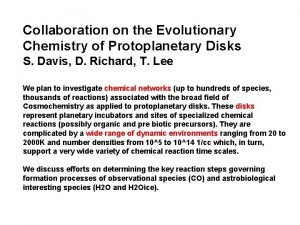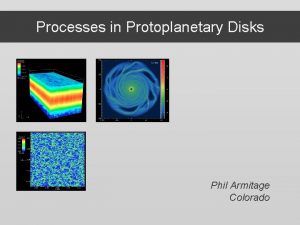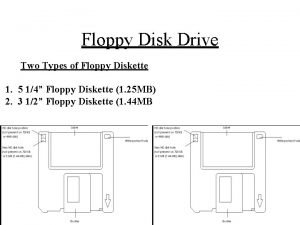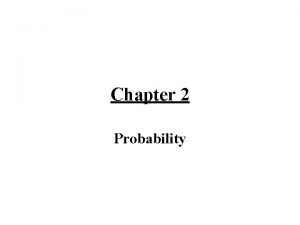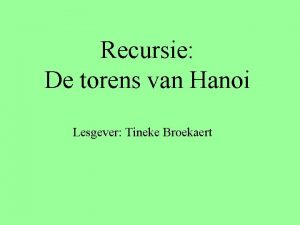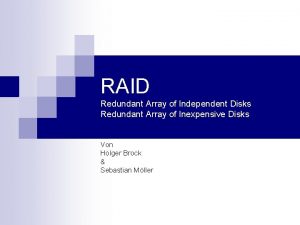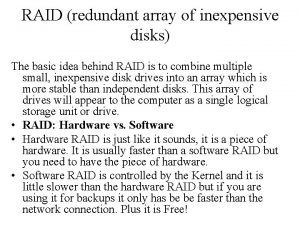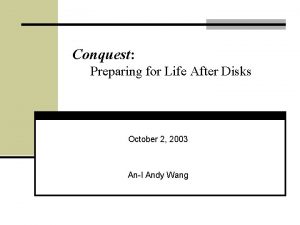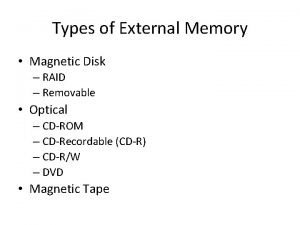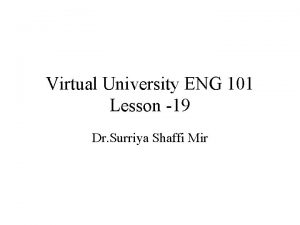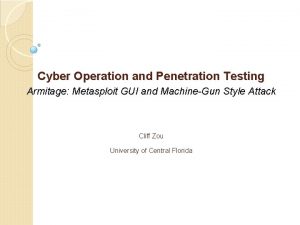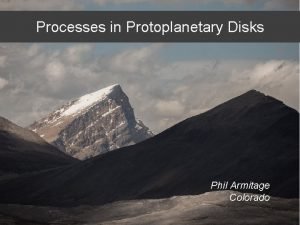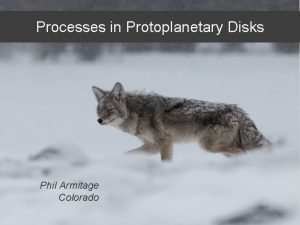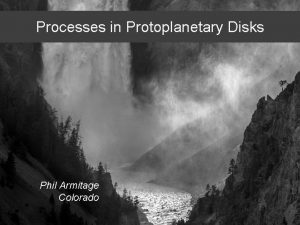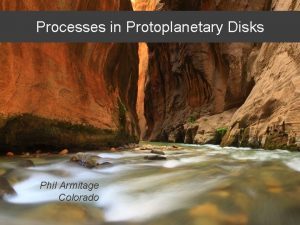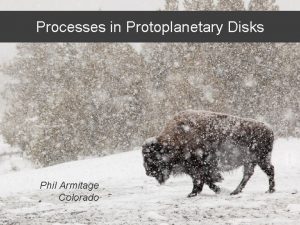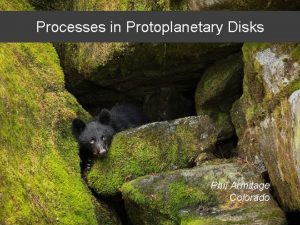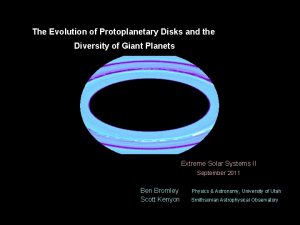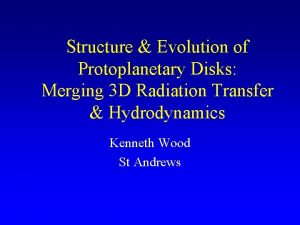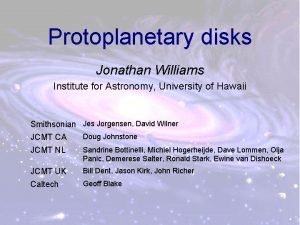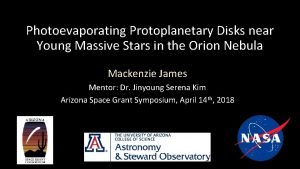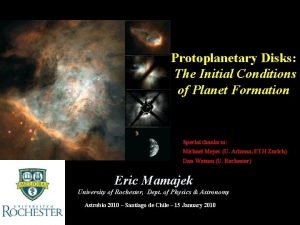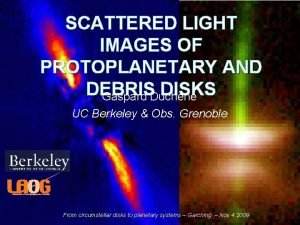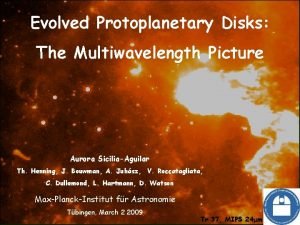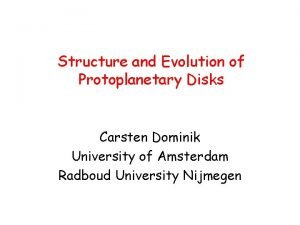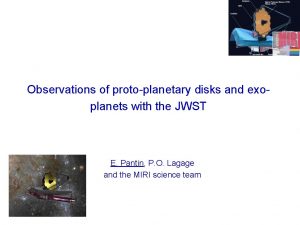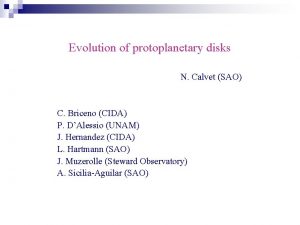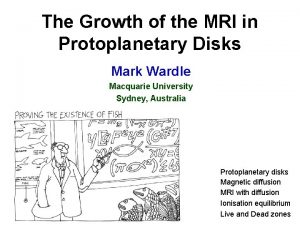Processes in Protoplanetary Disks Phil Armitage Colorado Processes






















- Slides: 22

Processes in Protoplanetary Disks Phil Armitage Colorado

Processes in Protoplanetary Disks 1. 2. 3. 4. 5. 6. 7. 8. Disk structure Disk evolution Turbulence Episodic accretion Single particle evolution Ice lines and persistent radial structure Transient structures in disks Disk dispersal

The central problem The gas orbital velocity is accurately Keplerian Specific angular momentum is robustly an increasing function of radius Even though lowest energy state favors gas accreting on to the star, angular momentum conservation forbids it

The central problem Consistent with long observed disk lifetimes – disks are quasi-equilibrium structures that evolve slowly compared to dynamical time scale Hernandez et al. ‘ 07

The central problem Redistribution of angular momentum within disk “Viscous” disk: angular momentum mixed by internal turbulence Not mutually exclusive! Loss of angular momentum in a wind (1) if field line is like a rigid wire (2)

Classical disks Lynden-Bell & Pringle ’ 74; Shakura & Sunyaev ’ 73 theory: • disk is geometrically thin (h/r << 1), axisymmetric, planar • angular momentum redistribution is modeled as a Navier-Stokes shear viscosity (kinematic viscosity n) continuity + angular momentum conservation specification of the torque G – local, scales linearly with shear

Keplerian potential specializes to… Diffusive evolution of surface density S Viscous time scale: Green’s function solution: mass flows to r = 0, while angular momentum carried by tail of mass to infinity

In steady-state, if: Also have explicit self-similar solution: Simple model to fit to observations

How applicable is classical disk theory? Angular momentum transport is not due to real “viscosity” ~km s-1 ~10 cm However, obtain same one-dimensional evolution equation if transport is due to an average turbulent stress, provided it is locally defined. e. g. for a fluid with magnetic fields, transport from fluid (“Reynolds”) and magnetic (“Maxwell”) stress Balbus & Papaloizou ‘ 99

How applicable is classical disk theory? Things will go wrong if we try to apply theory when: • transport mechanism is non-local (e. g. self-gravity when Mdisk is not much smaller than M*) • mass loss (e. g. from photoevaporation) occurs on a time scale < viscous time scale • 1 D situations where W far from Keplerian • time scales shorter than correlation time for turbulence • any 2 D or 3 D situation (warps, eccentric disks, meridional circulation)…

a-model disks Can make a predictive theory if we can write n as a function of other disk parameters (T, r, r, xe…) Shakura-Sunyaev ‘ 73 a-prescription For a assumed constant, one parameter description of protoplanetary disk evolution Identify disk lifetime with the viscous time at outer edge tn = 1 Myr at 30 AU, (h / r) = 0. 05 a = 0. 01

accretion rate 10 -7 MSun yr-1 If irradiation dominates, with fixed T ~ r -1/2, then an a-disk is equivalent to n ~ r (since n = acs 2 / W) An a model predicts the time-varying radial (and vertical) structure for any accretion rate e. g. snow line near 4 AU for this model Bell et al. ‘ 97

We can always choose to express the efficiency of angular momentum transport in terms of a a-disk theory is useful if it encodes the “leading order” dependence of the stress on the local disk properties, i. e. so that a is a slowly varying function of S, r etc Various caveats: • a likely a strong function of T, S, if transport is due to MHD processes • vertical structure also depends on how accretion energy is distributed vertically… even more uncertain • for comparison against observations, reducing a possibly complex function to one number

Star-disk interactions For a weakly-magnetized star: boundary layer Classical theory: • point in flow at where d. W/dr = 0 • viscous stress vanishes • disk has a boundary condition of zero torque • star accretes gas with high angular momentum • kinetic energy of disk is dissipated in narrow boundary layer, expected to be hot and luminous

Belyaev et al. ‘ 13 Boundary layer models are sensitive to the nature of disk angular momentum transport: d. W / dr has opposite sign Boundary layer flow is not unstable to the magnetorotational instability, rather evidence for transport by acoustic waves (non-local, not a “viscosity” at all!)

In protostellar accretion, boundary layers occur at high accretion rate (FU Orionis objects) Radiation hydrodynamics likely important in determining the structure of the boundary layer Kley & Lin ‘ 96 Where is accretion energy released in FU Ori boundary layers if waves transport angular momentum? What is structure of circumplanetary disk boundary layers?

At low accretion rates, expect magnetospheric accretion Simulation: Dyda et al. ‘ 15 Suppose vertical field at disk surface is a dipole, toroidal component similar Then magnetic torque on surface of disk Time scale for stellar torque to drive inflow is shorter than viscous time inside some magnetospheric radius rm

Very rough, but weak function due to rapid dipole fall off For k. G fields, 10 -8 MSun yr-1, typically rm = 10 -20 RSun Consequences: • gas accretes along magnetic field lines (free-fall, accretion shock on surface) • magnetic field allows star to exert a non-zero torque on disk inner edge (in principle, star may spin down) • innermost disk is missing

Interaction between disk and stellar field close to rm favorable location for launching jets Dyda et al. ’ 15

Another non-zero torque case for circumbinary disks Assume gravitational torques from binary completely forbid inflow through some inner radius r = rin In 1 D: Analytic Green’s function solution describing decretion disk • disk L increases due to binary torque • both the mass and angular momentum eventually flow outward • energy / angular momentum comes from binary, which shrinks

Analytic solution Pringle ’ 91 Prototype for “Type II” planetary migration

Even in binaries, gas can flow across barrier and be accreted / form smaller disk around individual stars Artymowicz & Lubow ‘ 96 Critical physics for massive planet growth and migration Simulation Cuadra et al. ‘ 09 How does this operate with realistic disk turbulence?
 Protoplanetary disk
Protoplanetary disk Disk structure
Disk structure Raid nedir
Raid nedir Types of floppy disk
Types of floppy disk Probability learning objectives
Probability learning objectives Tower of hanoi 4 disks
Tower of hanoi 4 disks Holger brock
Holger brock What is a magnetic storage device
What is a magnetic storage device Aka.ms.sqlcapacity
Aka.ms.sqlcapacity Redundant arrays of inexpensive disks
Redundant arrays of inexpensive disks Conquest data disks
Conquest data disks Fixed-head magnetic disk storage
Fixed-head magnetic disk storage Disks and tapes can be stored ------- a library. eng101
Disks and tapes can be stored ------- a library. eng101 A mechanism that spins, reads, and writes disks.
A mechanism that spins, reads, and writes disks. Redundant arrays of independent disks
Redundant arrays of independent disks Concurrent in os
Concurrent in os Kali nmap gui
Kali nmap gui Suman armitage
Suman armitage Kid simon armitage
Kid simon armitage Sn1per metasploit
Sn1per metasploit Punk merkmale
Punk merkmale Remains poem
Remains poem Simon armitage the manhunt
Simon armitage the manhunt
